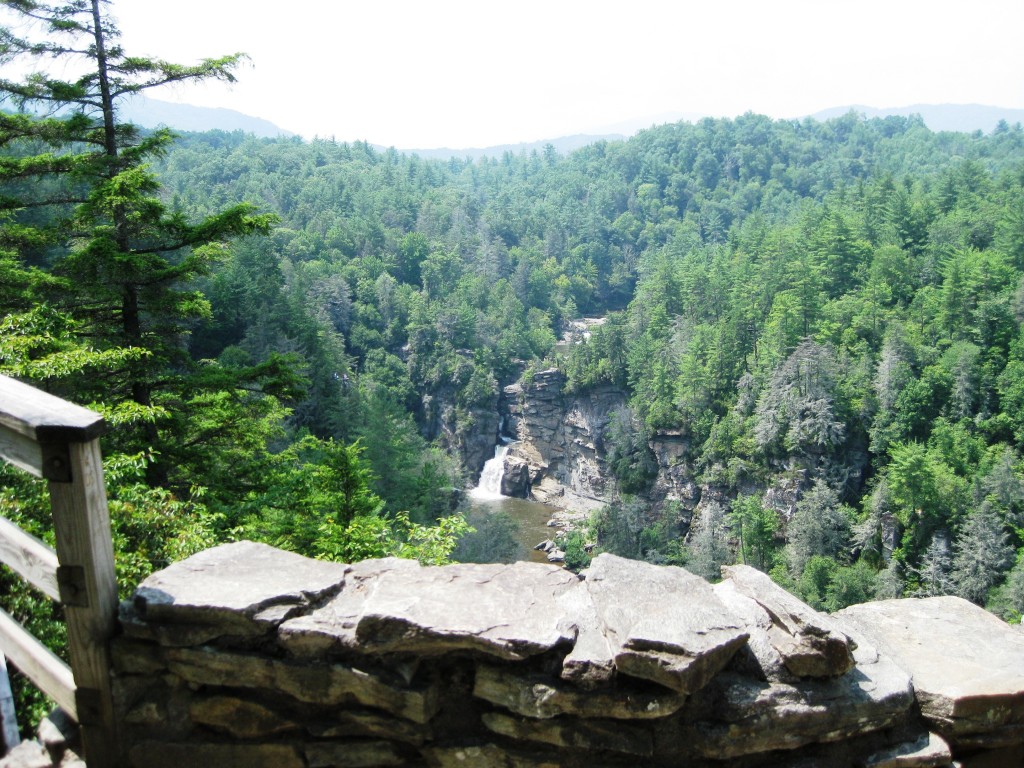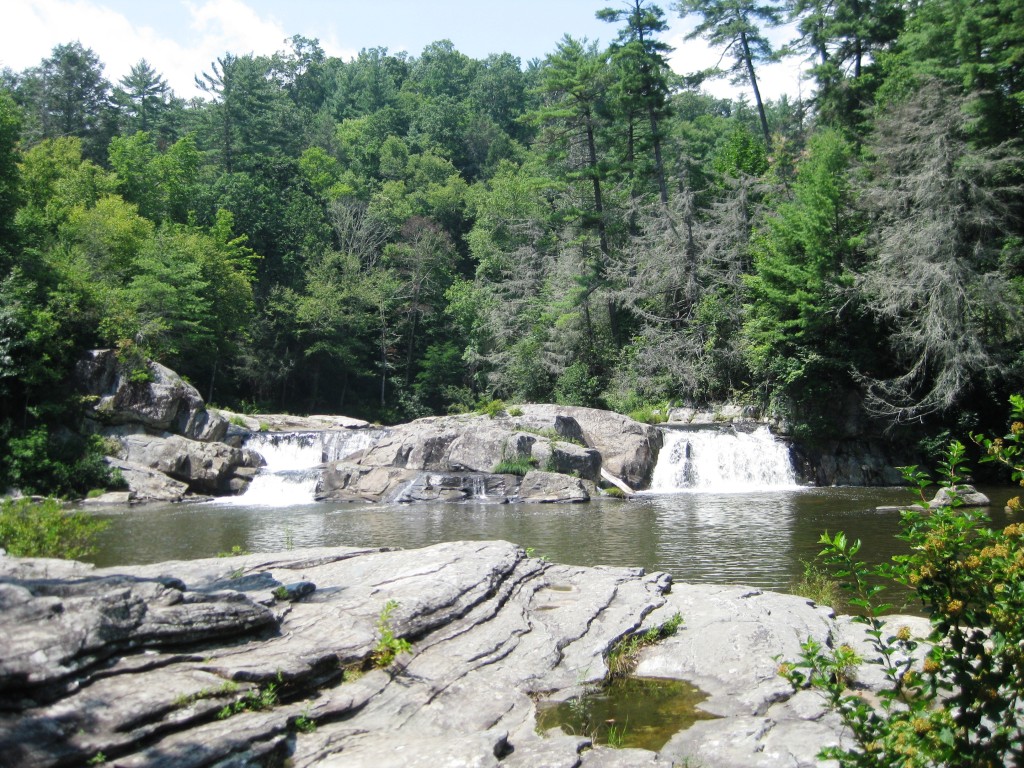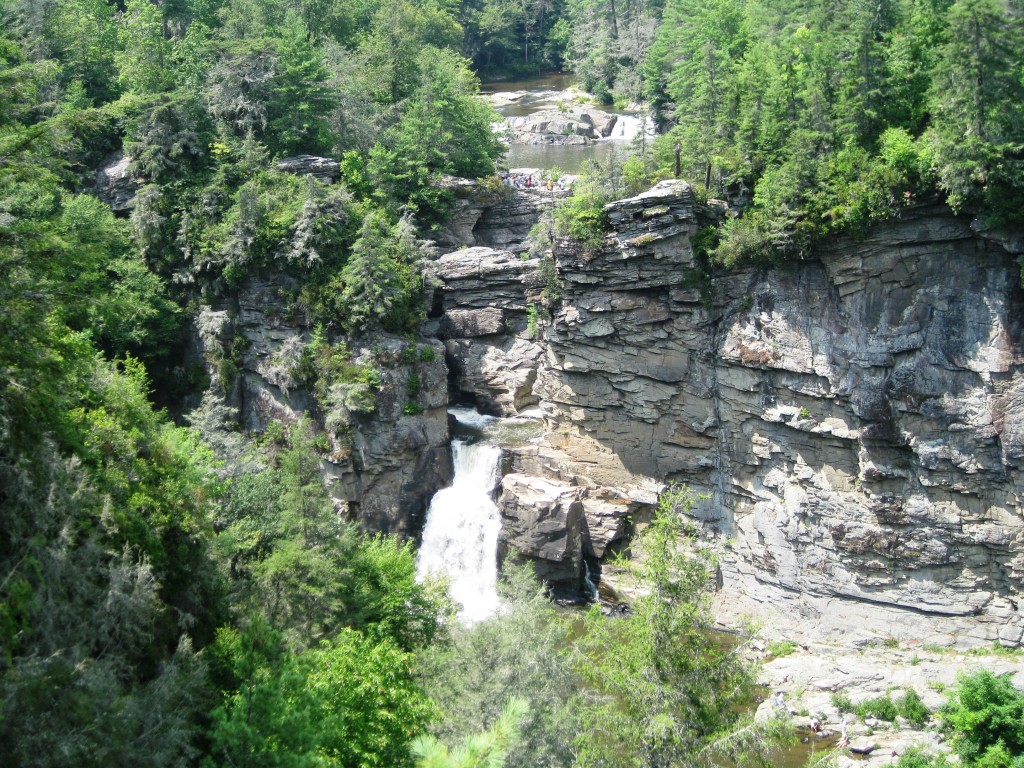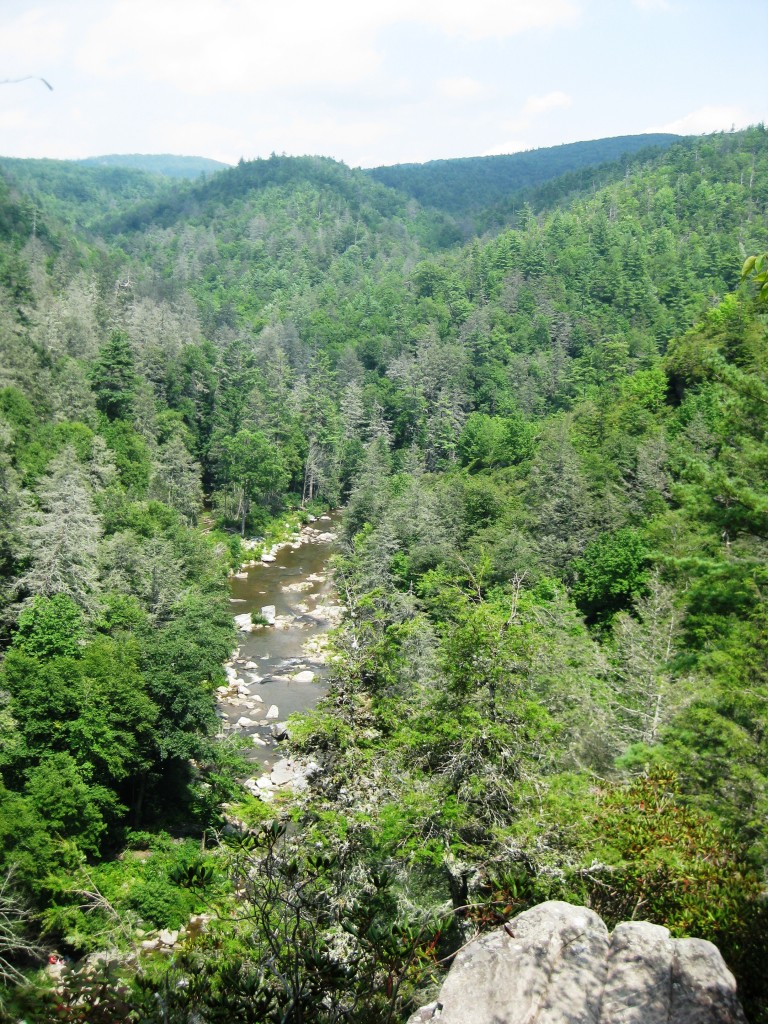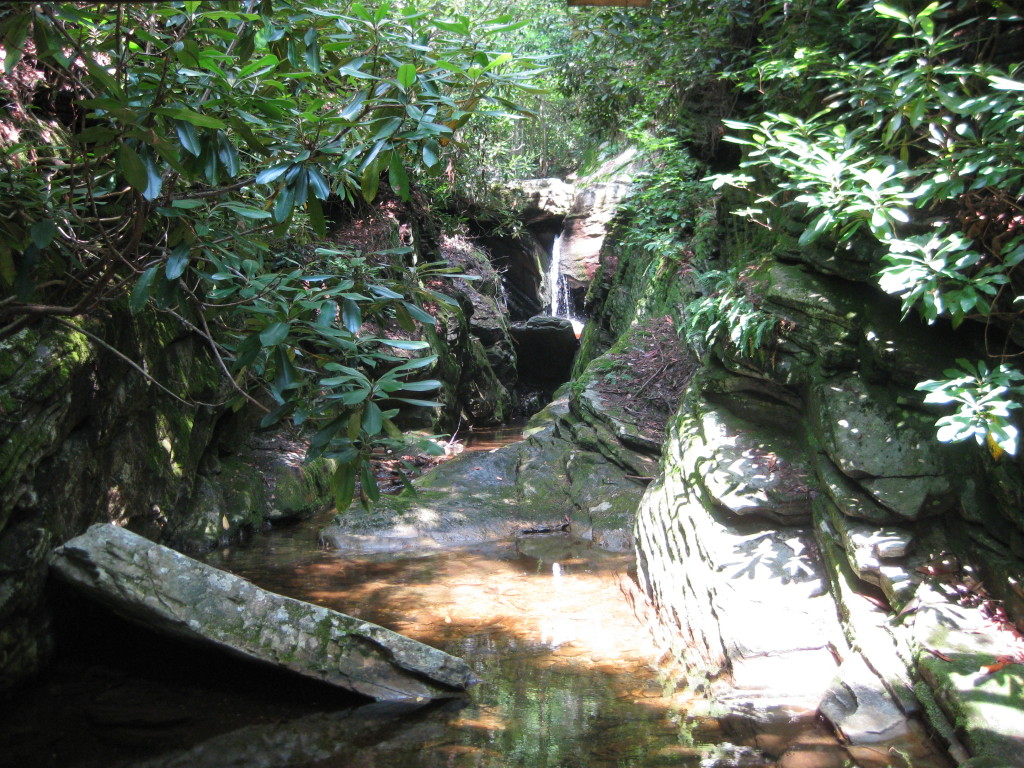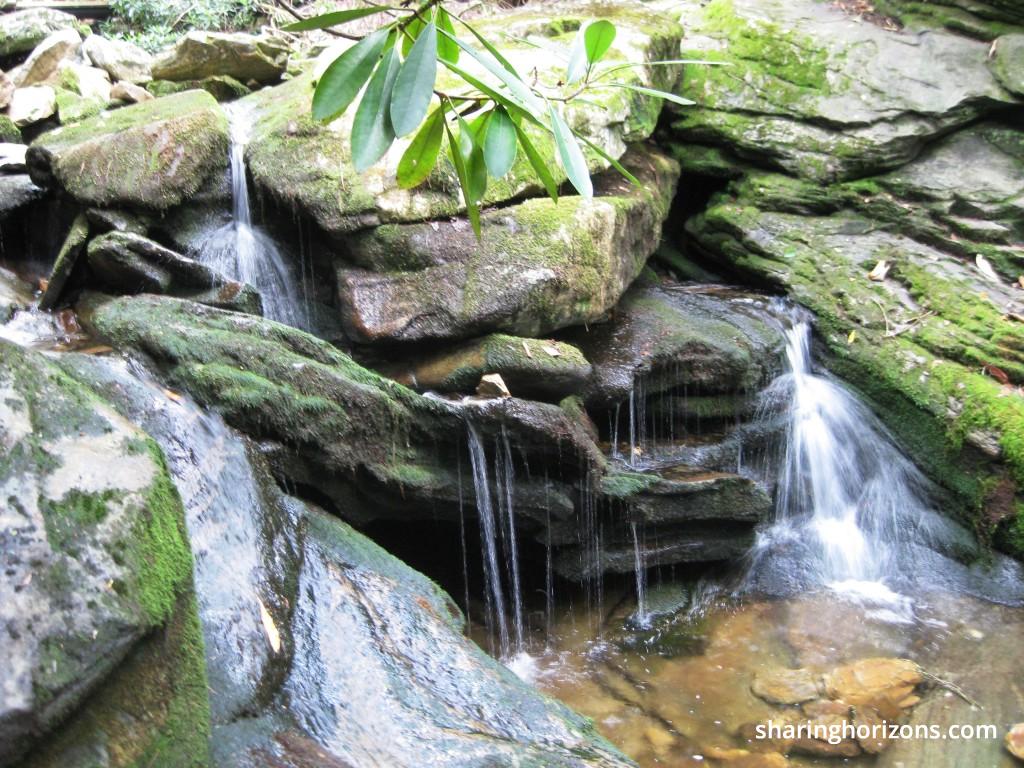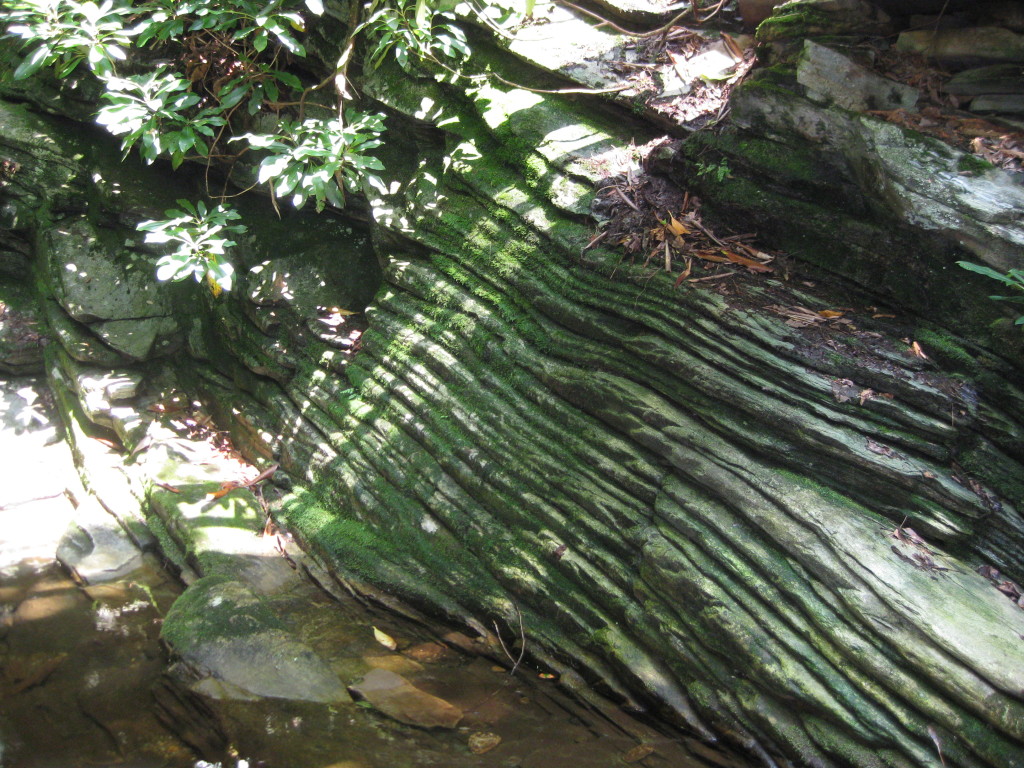Tom and I visited the Grand Canyon of North Carolina, the Linville Gorge in Pisgah National Forest, several years ago. We spent a couple of days in the area hiking and exploring. After all the time we have spent in North and South Carolina in the last year, I thought it was time to write about this Grand Canyon of North Carolina.
Linville Gorge was created by the scouring action of the Linville River. The Gorge encases the river for twelve miles through rugged and steep stone walls. Over this twelve miles, the river descends 2,000 feet before emerging into the Catawba valley. Today the Linville Gorge is a wilderness area of 12,000 acres administered by the National Forest Service. There are numerous rock formations and the area is covered by a dense hardwood and pine forest with a wide variety of smaller trees and other plants. Recreation opportunities include hiking,backpacking, rock climbing, fishing, and hunting.
You get to Linville Gorge off the Blue Ridge Parkway. The Linville Falls Visitor Center is located just off the Parkway at Milepost 316.3. This Visitor Center is closed from November 1 through April 15, but the trails are open year-round. The best, and most traveled, hiking trails in Linville Gorge are the ones that overlook the Falls and begin at the Visitors Center. The overlooks into the Gorge are spectacular all along here and always busy in the summer and fall. Seeing the whole gorge takes some effort and there are many rugged hiking trails that get you away from the crowds and into the gorge.
The two most popular trails, with the best views, are Erwins View Trail and the Plunge Basin Trail. Both trails are moderate to strenuous. Erwins View Trail offers four overlooks, each revealing a different aspect of the Linville Falls area. The first overlook highlights the Upper Falls before the Linville River plunges out of sight. The second overlook, Chimney View, is the first point on the trail where the lower falls can be seen. It offers an excellent chance to photograph both the upper and lower falls. The overlook is named for the chimney-like outcroppings located to the right of the waterfall. The trail is strenuous in this area with considerable elevation gain. At Gorge View Overlook, hikers can see the Linville River cutting its way through the Linville Gorge Wilderness Area. Erwins View Trail ends at Erwins View Overlook. From this vantage point, you can enjoy a panoramic view of the Linville Gorge and a distant view of the upper and lower falls. The Plunge Basin Trail also starts at the visitor center. From the Plunge Basin Overlook you can see the lower falls and the Chimneys.
There are places to stay in the small towns around the Linville Gorge Wilderness. You can also camp in the wilderness, but you need a camping permit in the summer. There are also several local restaurants in the small towns around Linville Gorge.
If you are planning a trip to the Blue Ridge Parkway or to the Smoky Mountains, be sure to add Linville Gorge to your list of places to visit. The beauty and wildness of Linville Gorge certainly qualify it as the Grand Canyon of North Carolina.

